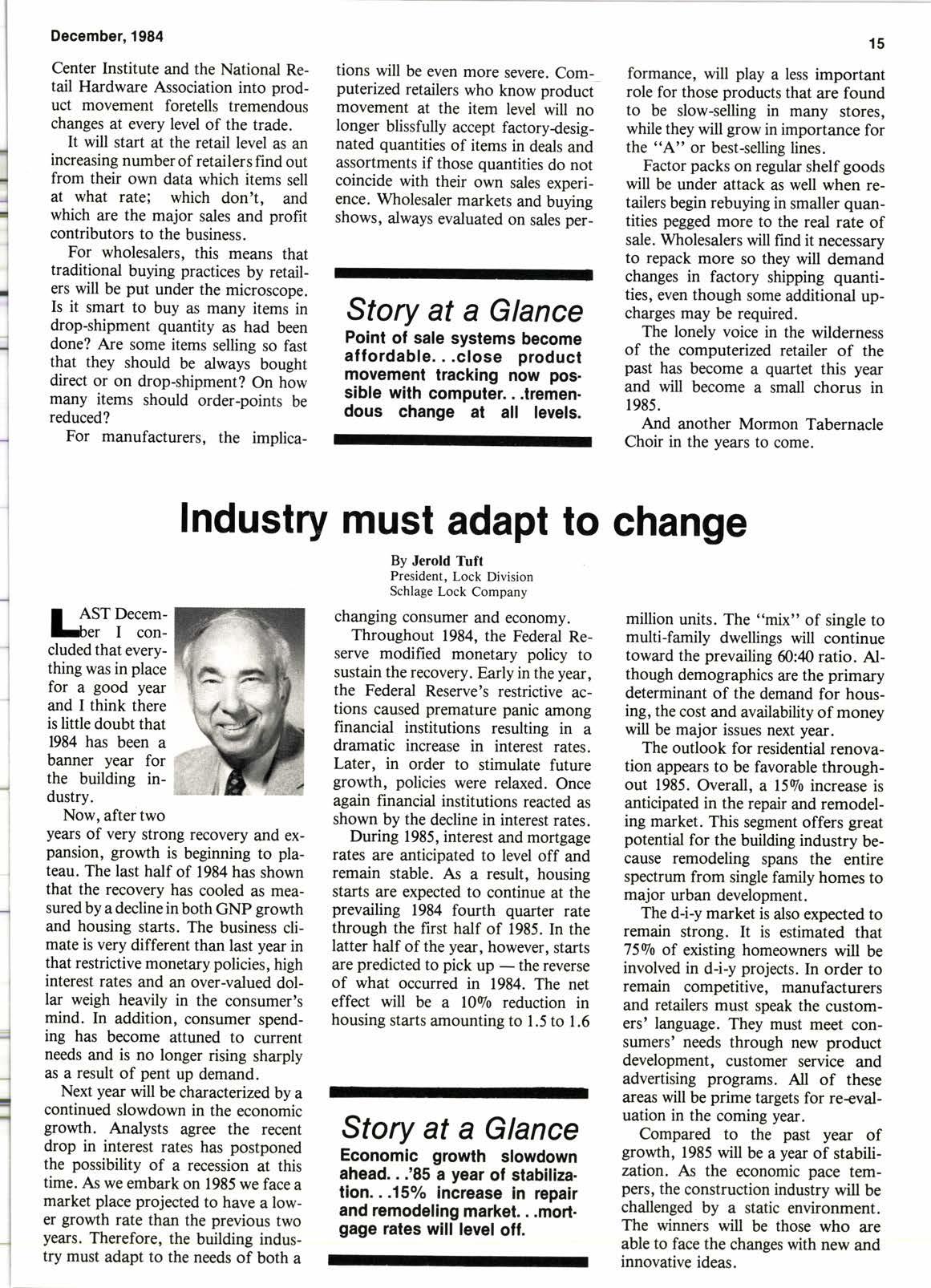
1 minute read
Industry must adapt to change
By Jerold Tuft Piesident, Lock Division Schlage Lock Company
changing consumer and economy.
con-
I AST DecemHrer I
cluded that everything was in place for a good year and I think there is little doubt that 1984 has been a banner year for the building industry.
Now, aftertwo years of very strong recovery and expansion, growth is beginning to plateau. The last half of 1984 has shown that the recovery has cooled as measured by a decline in both GNP growth and housing starts. The business climate is very different than last year in that restrictive monetary policies, high interest rates and an over-valued dollar weigh heavily in the consumer's mind. In addition, consumer spending has become attuned to current needs and is no longer rising sharply as a result of pent up demand.
Next year will be characterized by a continued slowdown in the economic growth. Analysts agree the recent drop in interest rates has postponed the possibility of a recession at this time. As we embark on 1985 we face a market place projected to have a lower growth rate than the previous two years. Therefore, the building industry must adapt to the needs of both a
Throughout 1984, the Federal Reserve modified monetary policy to sustain the recovery. Early in the year, the Federal Reserve's restrictive actions caused premature panic among financial institutions resulting in a dramatic increase in interest rates. Later, in order to stimulate future growth, policies were relaxed. Once again financial institutions reacted as shown by the decline in interest rates.
During 1985, interest and mortgage rates are anticipated to level off and remain stable. As a result, housing starts are expected to continue at the prevailing 1984 fourth quarter rate through the first half of 1985. In the latter halfofthe year, however, starts are predicted to pick upthe reverse of what occurred in 1984. The net effect will be a l09o reduction in housing starts amounting to 1.5 to 1.6










